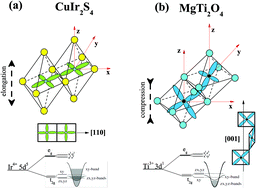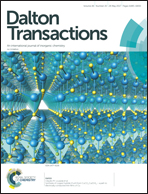Opposite pressure effects in the orbitally-induced Peierls phase transition systems CuIr2S4 and MgTi2O4†
Abstract
The iso-spinel structural systems CuIr2S4 and MgTi2O4 exhibit phase transitions of a similar nature at ∼230 K and ∼260 K respectively, which are explained as an orbitally-induced Peierls phase transition. However, in this work, we uncover that the applied pressure has opposite pressure effects on the phase transitions in CuIr2S4 and MgTi2O4. As the pressure increases, the phase transition temperature (TMI) for CuIr2S4 increases while that for MgTi2O4 decreases. In addition, the phase transition intensity becomes weaker for CuIr2S4 but gets stronger for MgTi2O4 under pressure. Our results indicate that the applied pressure suppresses the metallic phase in CuIr2S4, while enhances that in MgTi2O4. Combining the experimental observations with first-principles electronic structure calculations, we suggest that the opposite pressure effects in CuIr2S4 and MgTi2O4 originate from the different orbital ordering configurations (dxy, dyz/dxz) caused by different lattice distortions in these two systems. Our findings indicate directly that the interplay between the orbital and lattice degrees of freedom plays an important role in the orbitally-induced Peierls phase transition.



 Please wait while we load your content...
Please wait while we load your content...